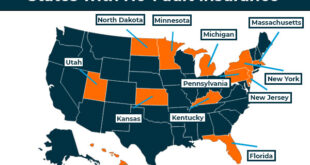Loan Repayment Assistance: Managing Your Debt Managing loan repayments can be overwhelming, especially if financial challenges arise. Loan repayment assistance programs provide a lifeline for borrowers, helping them manage or reduce their debt burdens. In this guide, we’ll explore what loan repayment assistance is, how to access it, and practical tips for optimizing its benefits.
What Is Loan Repayment Assistance?
Loan repayment assistance refers to programs designed to help borrowers manage their loan obligations by offering financial aid, modified payment terms, or forgiveness options. These programs can be offered by government agencies, private lenders, or nonprofit organizations.
Key Features of Loan Repayment Assistance
- Reduced Monthly Payments: Adjustments to make repayments more affordable.
- Loan Forgiveness: Partial or full cancellation of the loan balance under specific conditions.
- Deferment or Forbearance: Temporary suspension of payments during hardship.
- Interest Rate Reductions: Lower interest rates to decrease the total repayment amount.
Types of Loan Repayment Assistance Programs
- Federal Programs: Common for student loans; include Public Service Loan Forgiveness (PSLF) and Income-Driven Repayment (IDR) plans.
- State-Specific Programs: Focused on residents in particular states, often targeting professionals like teachers or healthcare workers.
- Nonprofit Assistance: Organizations providing grants or other forms of financial relief.
- Private Lender Options: Refinancing or hardship plans offered by banks and credit unions.
Eligibility Criteria
Eligibility depends on factors such as:
- Loan Type: Federal loans, private loans, or credit card debt.
- Income Level: Low-income households may qualify for income-based assistance.
- Employment Status: Some programs target specific occupations, like public service roles.
- Loan Status: Assistance may be available for loans in good standing or those in default.
How to Apply for Loan Repayment Assistance
- Assess Your Situation: Understand your financial needs and repayment challenges.
- Research Programs: Identify suitable programs through government websites, lender portals, or nonprofit directories.
- Prepare Documentation: Gather income proof, loan details, and any required forms.
- Submit Applications: Follow the program’s application process and deadlines.
- Follow Up: Monitor your application status and provide additional information if requested.
Pros and Cons of Loan Repayment Assistance
Advantages
- Alleviates financial stress.
- Prevents loan defaults.
- Reduces long-term debt burden.
Disadvantages
- May require proof of significant hardship.
- Some options, like deferment, can increase interest.
- Limited availability for certain loan types.
10 Tips for Maximizing Loan Repayment Assistance
- Start Early: Don’t wait until default to seek help.
- Understand Terms: Ensure you fully grasp the program’s conditions.
- Stay Organized: Keep track of application deadlines and required documents.
- Communicate with Lenders: Notify lenders immediately if you face financial difficulties.
- Explore Refinancing: Consider this option if it offers lower interest rates.
- Seek Professional Advice: Financial counselors can guide you to the best options.
- Budget Wisely: Reduce unnecessary expenses to manage repayments.
- Check State-Specific Programs: Look for local initiatives that suit your situation.
- Use Loan Calculators: Estimate how assistance affects your repayments.
- Monitor Credit Scores: Ensure assistance doesn’t negatively impact your credit rating.
10 Frequently Asked Questions About Loan Repayment Assistance
- What is loan repayment assistance?
It is a program designed to help borrowers manage, reduce, or eliminate their debt. - Who qualifies for these programs?
Eligibility varies, but factors include income, loan type, and employment. - Are there fees for applying?
Most legitimate programs, especially government ones, are free to apply for. - Can private loans be included?
Some programs cater to private loans, though eligibility is more limited. - Will assistance affect my credit score?
Properly managed assistance usually has no negative impact. - Can I get assistance if my loan is in default?
Yes, some programs target borrowers with defaulted loans. - What documents are needed?
Common requirements include income proof, tax returns, and loan statements. - How long does the process take?
It varies; some approvals take weeks, while others may take months. - Is there a limit to how much assistance I can receive?
Yes, limits depend on the program’s terms. - What happens if my application is denied?
Consider other programs or consult a financial advisor for alternatives.
Conclusion
Loan repay assistance is a powerful tool for individuals facing financial hardship. By exploring the various options available—federal, state, nonprofit, and private programs—you can find relief tailored to your needs. Start by assessing your situation, researching the best programs, and diligently following the application process.
With proper guidance, loan repay assistance can alleviate stress and set you on a path toward financial stability. By staying informed and proactive, you can regain control of your finances and work toward a debt-free future.
 Gerbang Finance
Gerbang Finance

